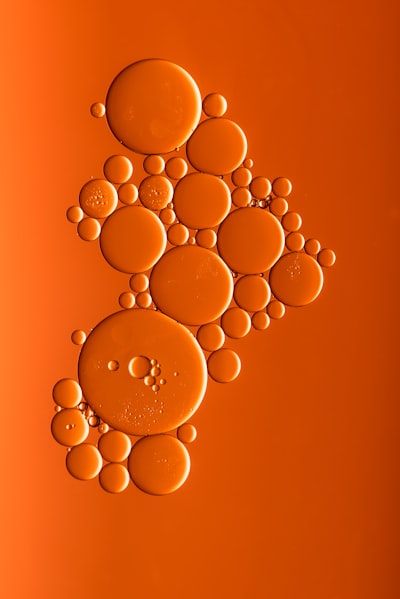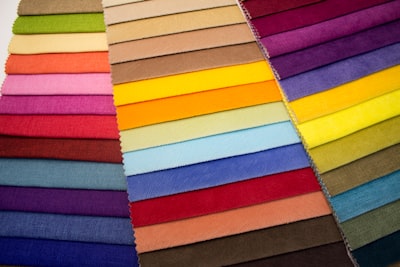Benefits of Sun Shirts for Men | Embrace Sun Safety

Key Highlights
- Sun shirts for men are an essential of sun protection, offering UPF ratings that block harmful UV rays.
- These shirts provide long sleeve coverage to protect your skin from sunburn and long-term damage.
- Sun shirts are made from quick-drying fabric, keeping you cool and comfortable even on hot days.
- They are available in a variety of colors and styles, making it easy to one that suits your taste and outdoor activities.
- Investing in a sun shirt is a smart choice for anyone who spends time outdoors, as it helps reduce the risk of skin cancer and other sun-related health issues.
- These shirts are not only functional but also stylish, allowing you to embrace sun safety without sacrificing your personal style.
Introduction
Sun exposure is a common part of our daily lives, whether we're out for a walk, playing sports, or simply relaxing in the backyard. While enjoying the sunshine is important for our overall well-being, it's crucial to protect our skin from the harmful effects of UV radiation. Sun shirts for men have gained popularity as an effective and stylish way to shield our skin from the sun's harmful rays. For even more protection, we've also tested and reviewed a variety of the best sunglasses and outlined our favorite wide-brimmed sun hats.
Sun shirts are specially designed garments that offer sun protection by blocking UV radiation. They are made from fabrics with UPF (Ultraviolet Protection Factor) ratings, which indicate how well the fabric can shield against UV radiation. The higher the UPF rating, the greater the level of protection provided by the sun shirt.
In this blog, we will delve into the benefits of sun shirts for men and why they should be a of your sun safety routine. We will explore the science behind UV radiation, the long-term impacts of sun exposure on the skin, the importance of protecting your skin, and the role of clothing, specifically sun shirts, in sun protection. We will also discuss what makes sun shirts different from regular clothing, factors to consider when choosing the right sun shirt, and when to wear sun shirts for maximum protection. Additionally, we will share real-life success stories and answer frequently asked questions about sun shirts.

Understanding UV Radiation and Its Effects on Skin
UV radiation is a type of electromagnetic radiation emitted by the sun. It consists of three types of rays: UVA, UVB, and UVC. UVC rays are absorbed by the ozone layer and do not reach the Earth's surface. UVA and UVB rays, on the other hand, can penetrate the Earth's atmosphere and directly affect our skin.
Exposure to UV radiation can have damaging effects on the skin, including sunburn, premature aging, and an increased risk of skin cancer. Sunburn occurs when the skin is exposed to excessive amounts of UVB rays, leading to redness, pain, and peeling. Over time, repeated exposure to UV radiation can cause long-term damage, such as wrinkles, age spots, and a weakened immune system. It is estimated that up to 90% of skin aging is caused by sun exposure.
Skin cancer is another serious concern associated with UV radiation. According to the Skin Cancer Foundation, one in five Americans will develop skin cancer in their lifetime. The most common types of skin cancer are basal cell carcinoma, squamous cell carcinoma, and melanoma. Melanoma, although less common, is the most deadly form of skin cancer. Protecting your skin from UV radiation is crucial in reducing the risk of skin cancer and maintaining good skin health.
The Science Behind UV Radiation

UV radiation is a form of energy emitted by the sun. It consists of UVA, UVB, and UVC rays, with UVA rays being the least harmful and UVC rays being the most harmful. UVA rays have a longer wavelength and can penetrate the deeper layers of the skin, causing premature aging and DNA damage. UVB rays have a shorter wavelength and primarily affect the outer layers of the skin, leading to sunburn and an increased risk of skin cancer.
When UV radiation reaches the skin, it interacts with the DNA in skin cells, causing damage and mutations. This can lead to the development of cancerous cells and other skin issues. UV radiation also triggers the production of melanin, a pigment that gives the skin its color. The purpose of melanin is to absorb and dissipate UV radiation, providing some level of natural sun protection. However, the amount of melanin produced varies from person to person, making some individuals more susceptible to sun damage.
It's important to note that UV radiation can still penetrate through clouds and glass, so it's crucial to protect your skin even on cloudy or indoor days. Wearing sun shirts is an effective way to block and minimize the harmful effects of UV radiation, reducing the risk of skin damage and maintaining good skin health.
Long-Term Impacts of Sun Exposure
Long-term sun exposure can have significant impacts on your health. The harmful effects of UV radiation accumulate over time, increasing the risk of skin cancer and other sun-related health issues. Here are some long-term impacts of sun exposure:
Skin Cancer: Prolonged sun exposure is a major risk factor for developing skin cancer. The most common types of skin cancer are basal cell carcinoma, squamous cell carcinoma, and melanoma. These can be life-threatening if left untreated. Protecting your skin from the sun's harmful rays is crucial in reducing the risk of skin cancer.
Premature Aging: Sun exposure accelerates the aging process, leading to the development of wrinkles, fine lines, age spots, and a rough texture. This is known as photoaging, and it is caused by the breakdown of collagen and elastin fibers in the skin due to UV radiation. Protecting your skin from the sun can help keep it looking youthful and reduce the signs of premature aging.
Weakened Immune System: Prolonged sun exposure can suppress the immune system, making it less effective at fighting off infections and diseases. This can leave you more susceptible to illnesses and reduce your body's ability to heal wounds.
Eye Damage: UV radiation can also cause damage to the eyes, including cataracts, macular degeneration, and growths on the eye's surface. Wearing sunglasses and a wide-brimmed hat can help protect your eyes from the sun.
By taking steps to protect your skin from the sun, such as wearing sun shirts and using sunscreen, you can minimize the long-term impacts of sun exposure and maintain good overall health.
The Importance of Protecting Your Skin
Protecting yourself from the sun's harmful rays is essential for maintaining good skin health and reducing the risk of sun damage and skin cancer. While sunscreen is an important part of sun protection, it needs to be reapplied frequently, and it may not provide adequate protection on its own. This is where sun shirts come in.
Sun shirts offer a convenient and effective way to shield from UV radiation. They provide long-lasting protection throughout the day, eliminating the need for constant sunscreen application. Sun shirts are made from fabrics with UPF ratings, which indicate how well the fabric can block UV rays. Choosing clothing with a high UPF rating, such as sun hoodies, ensures maximum sun protection. By incorporating sun shirts, including sun hoodies, into your sun protection routine, you can enjoy outdoor activities while reducing the risk of sunburn, premature aging, and skin cancer.

Skin Cancer Prevention Strategies
Preventing skin cancer starts with adopting sun safety habits and incorporating sun protection measures into your daily routine. Here are some effective strategies for preventing skin cancer:
- Seek shade: Limit your time in the sun, especially during peak UV hours (10 am to 4 pm).
- Wear sun-protective clothing: Choose clothing with UPF ratings, such as sun shirts and hats, to shield yourself from harmful UV rays.
- Apply sunscreen: Use broad-spectrum sunscreen with SPF 30 or higher on all exposed areas, and reapply every two hours or after swimming or sweating.
- Wear sunglasses: Protect your eyes from UV radiation by wearing sunglasses that block 100% of UVA and UVB rays.
By following these skin cancer prevention strategies and incorporating sun shirts into your wardrobe, you can reduce your risk of developing skin cancer and enjoy the outdoors safely.
The Role of Clothing in Sun Protection
Clothing plays a crucial role in sun protection. While sunscreen is an important part of sun safety, it may not provide adequate protection on its own. Clothing acts as a physical barrier between your skin and the sun's harmful rays, reducing your risk of sunburn and skin damage. Sun shirts, in particular, are designed to provide maximum sun protection.
Sun shirts are made from fabrics with UPF (Ultraviolet Protection Factor) ratings, which indicate how well the fabric can block UV radiation. A higher UPF rating means greater protection. These shirts are typically made from lightweight and breathable materials that offer both sun protection and comfort, including short sleeve options. They are designed with long sleeves and a high neckline to provide ample coverage and protect the most vulnerable areas of the skin.
By choosing clothing with a high UPF rating, such as sun shirts, you can enhance your sun protection regimen and reduce the risk of sunburn, premature aging, and skin cancer.
What Makes Sun Shirts Different?
Sun shirts are a specialized type of clothing designed to provide superior sun protection. What sets them apart from regular clothing? Let's explore the key factors that make sun shirts different:
UPF Ratings: Sun shirts are made from fabrics with UPF (Ultraviolet Protection Factor) ratings, which indicate how well the fabric can block UV radiation. While regular clothing may provide some sun protection, sun shirts offer higher UPF ratings, ensuring greater sun protection.
Fabric Technology: Sun shirts are made using advanced fabric technologies that enhance their sun protection properties. These fabrics are designed to block a significant amount of UV radiation while remaining breathable and comfortable. They are often quick-drying and moisture-wicking, making them ideal for outdoor activities.
Long Sleeve Coverage: Sun shirts typically have long sleeves to provide maximum coverage for your arms. This protects your skin from sunburn and reduces the risk of long-term sun damage.
Durability: Sun shirts are constructed with durability in mind. They are designed to withstand the rigors of outdoor activities, making them a reliable choice for sun protection.
When it comes to sun protection, investing in sun shirts is a smart choice. Their UPF ratings, fabric technology, long sleeve coverage, and durability make them a superior option for sun safety.
Material and Fabric Technology

Sun shirts are made from a variety of materials, each with its own unique properties that contribute to their sun protection capabilities. Here are some common materials used in sun shirts:
- Bamboo: Bamboo fabrics are known for their softness, breathability, and natural UV protection properties. They are lightweight, moisture-wicking, and durable, making them ideal for outdoor activities.
- Nylon: Nylon fabrics are lightweight, quick-drying, and offer excellent UV protection. They are often blended with other materials to enhance their performance and durability.
- Polyester: Polyester fabrics are known for their durability, moisture-wicking properties, and UV resistance. They are often blended with other materials to create lightweight and breathable sun shirts.
- Spandex: Spandex is a stretchy material that provides a snug and comfortable fit. It is often blended with other materials to add stretch and flexibility to sun shirts.
Fabric technology plays a crucial role in the sun protection capabilities of sun shirts. Advanced technologies such as moisture-wicking, quick-drying, and odor-resistant properties enhance their performance and make them comfortable to wear in various outdoor conditions. When selecting a sun shirt, consider the material and fabric technology used, such as quick drying capabilities, to ensure maximum sun protection and durability.
UPF Ratings Explained
UPF (Ultraviolet Protection Factor) ratings indicate how well a fabric can block UV radiation. The higher the UPF rating, the greater the level of sun protection the fabric provides. Here's a breakdown of the UPF ratings and their corresponding sun protection levels:
|
UPF Rating |
Sun Protection Level |
|
UPF 15 |
Good |
|
UPF 30 |
Very Good |
|
UPF 50 |
Excellent |
|
UPF 50+ |
Ultimate |
A UPF rating of 15 provides good sun protection, blocking approximately 93% of UV radiation. A UPF rating of 30 offers very good sun protection, blocking approximately 97% of UV radiation. A UPF rating of 50 provides excellent sun protection, blocking approximately 98% of UV radiation. UPF 50+ is the highest rating available and offers ultimate sun protection, blocking more than 98% of UV radiation. Featured as one of the top sun protective clothing options, sun shirts for men are a must-have for those looking to embrace sun safety.
When selecting sun shirts, look for fabrics with higher UPF ratings to ensure maximum sun protection for your skin.
Choosing the Right Sun Shirt
Choosing the right sun shirt is crucial for effective sun protection. Here are some factors to consider when selecting a sun shirt:
Fit: Look for a sun shirt that provides a comfortable and relaxed fit. It should allow for ease of movement and not feel too tight or restrictive.
Material: Consider the material of the sun shirt. Bamboo, nylon, and polyester are popular choices due to their lightweight, moisture-wicking, and UV-resistant properties.
UPF Rating: Check the UPF rating of the sun shirt. A higher UPF rating provides greater sun protection. Aim for a sun shirt with a UPF rating of 30 or higher.
By considering these factors, you can choose a sun shirt that fits well, offers excellent sun protection, and allows you to enjoy outdoor activities with peace of mind.
Factors to Consider: Fit, Material, and UPF Rating
When choosing a sun shirt, it's important to consider three key factors: fit, material, and UPF rating.
Fit: Look for a sun shirt that fits comfortably and allows for ease of movement. It should not feel too tight or restrictive, ensuring maximum comfort during outdoor activities.
Material: Consider the material of the sun shirt. Look for lightweight and breathable fabrics such as bamboo, nylon, or polyester. These materials are known for their moisture-wicking properties, keeping you cool and comfortable.
UPF Rating: Check the UPF rating of the sun shirt. The higher the UPF rating, the better the sun protection it offers. Aim for a UPF rating of 30 or higher for optimal sun protection.
By considering these factors, you can choose sun shirts for men that fits well, is made from a comfortable and breathable material, and provides excellent sun protection for your outdoor activities.
Recommendations for Different Activities
Sun shirts are versatile garments that can be worn for a variety of outdoor activities. Here are some recommendations for different activities:
- Hiking and Camping: Look for sun shirts for men with moisture-wicking and quick-drying properties, as you may be sweating during these activities. Long sleeves and a high neckline offer optimal sun protection.
- Water Sports: Choose a sun shirt made from a lightweight and water-resistant fabric. Look for features like a zip or hood for added protection.
- Golf: Opt for a sun shirt with a UPF rating of at least 30, as you will be exposed to the sun for long periods. Look for a comfortable and breathable material that allows for ease of movement.
- Everyday Wear: Consider a sun shirt that is stylish and versatile enough to be worn for everyday activities. Look for a fabric that offers both sun protection and comfort.
By choosing the right sun shirt for your specific activity, you can enjoy your outdoor adventures while staying protected from the sun's harmful rays.

When to Wear Sun Shirts for Maximum Protection
Sun shirts should be worn whenever you are exposed to the sun's harmful rays. Here are some scenarios when wearing a sun shirt can provide maximum protection:
During Peak UV Hours: The sun's rays are strongest between 10 am and 4 pm, so it's crucial to wear a sun shirt during these hours. This is when UV radiation is highest, increasing the risk of sunburn and skin damage.
On Sunny Days: Even on cloudy days, UV radiation can still penetrate through the clouds and cause skin damage. It's important to wear a sun shirt regardless of cloud cover.
During Outdoor Activities: Whether you're hiking, running, playing sports, or gardening, wearing a sun shirt can provide continuous sun protection throughout your outdoor activities. The long sleeves and high neckline of sun protection clothing for men offer maximum coverage, reducing the risk of sunburn and long-term skin damage.
On Vacation: When traveling to sunny destinations, it's essential to wear a sun shirt to protect your skin from intense UV radiation. Whether you're lounging by the pool or exploring new sights, a sun shirt offers the convenience of all-day sun protection.
By wearing a sun shirt during these times, you can ensure maximum sun protection and reduce the risk of sunburn and skin damage. Don't forget to complement your sun shirt with other sun protection measures such as a wide-brimmed hat, sunglasses, and sunscreen for comprehensive sun safety.
Seasonal Considerations
Seasonal considerations play a role in determining the level of sun protection needed. Here are some seasonal factors to consider when wearing sun shirts for UV protection:
Summer: During the summer months, the sun's rays are typically more intense, increasing the risk of sunburn and skin damage. It's crucial to wear a sun shirt with a high UPF rating, as well as other sun protection measures such as sunglasses, a wide-brimmed hat, and sunscreen.
Winter: Although UV radiation is generally lower in winter, it can still cause skin damage, especially at higher altitudes or in snowy environments. Snow reflects UV radiation, increasing your exposure. Wearing sun shirts can provide added protection during winter activities, such as skiing or snowboarding.
Spring and Fall: During transitional seasons, UV radiation can still pose a risk, especially on sunny days. Wearing a sun shirts for men is important during outdoor activities, as it offers continuous sun protection throughout the day.
By considering seasonal factors and wearing a sun shirt year-round, you can ensure optimal sun protection and reduce the risk of sunburn and long-term skin damage.
Conclusion
Embrace the sun safely by understanding the importance of protecting your skin from UV radiation. Sun shirts play a crucial role in safeguarding against long-term skin damage and skin cancer. With advanced material technology and UPF ratings, these shirts offer maximum protection for various activities and seasons. Choose the right sun shirt based on fit, material, and UPF rating to stay safe while enjoying the outdoors. Remember, wearing sun shirts is not just a fashion statement but a smart choice for your skin's health. Stay informed, stay protected, and enjoy the sunshine responsibly.
Frequently Asked Questions
Are sun shirts hot to wear in summer?
Sun shirts are designed to be lightweight and breathable, making them comfortable to wear in summer. The moisture-wicking properties of sunscreen shirts for men help keep you cool and dry, even on hot days.
How often should I replace my sun shirt?
The lifespan of a mens sun shirt, also known as mens sunblock shirts or mens uv shirts, depends on factors such as the quality of the fabric and how often it is worn and washed. As a general guideline, it's recommended to replace your sun shirt every 1-2 years or if you notice signs of wear and tear.
Can I wear a sun shirt for everyday use?
Absolutely! Sun shirts are not limited to outdoor activities. They can be worn for everyday use, providing sun protection while keeping you comfortable and stylish. Many sun shirts are designed with versatile styles that easily transition from outdoor adventures to everyday wear.







